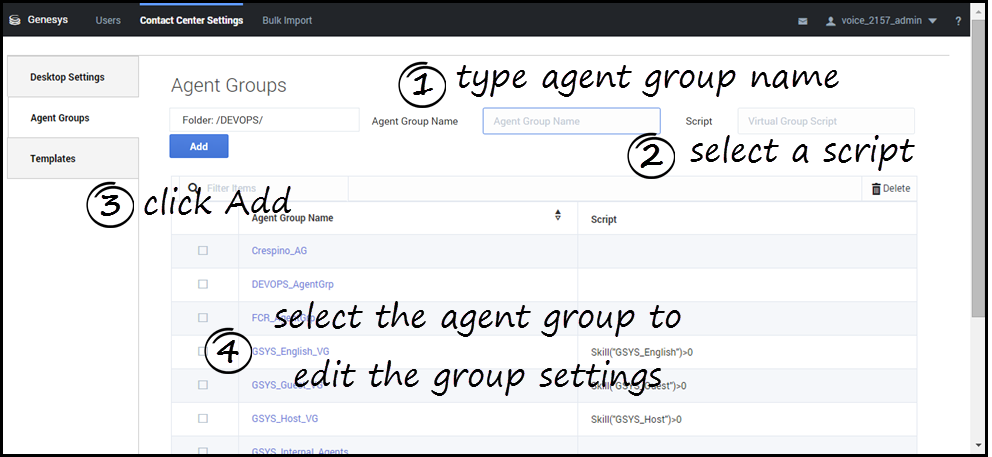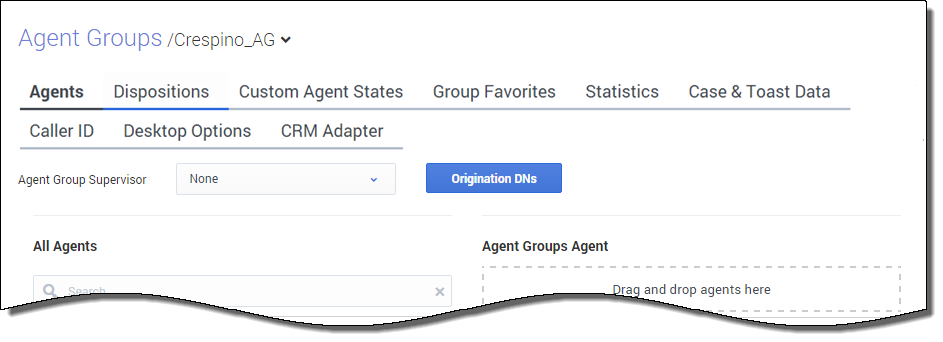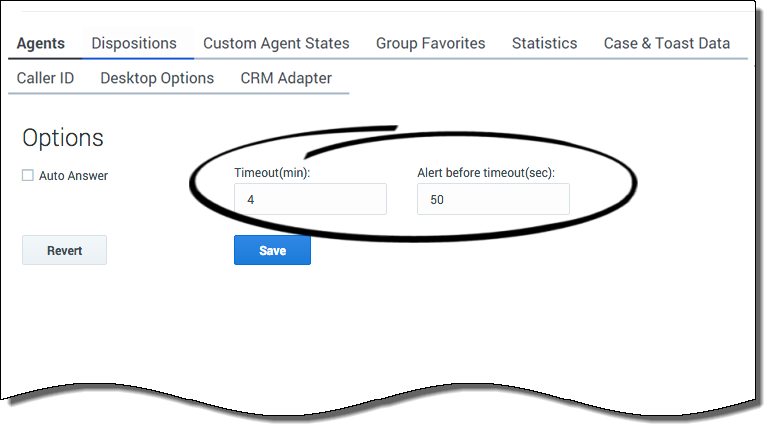Contents
Agent Groups
An Agent Group is a logical grouping of agents. Agent Groups are typically set up to provide particular sets of contact-center services.
Prerequisites
Before you can configure Agent Groups:
- You need to configure skills that will assign to the Agent Groups. If you haven't done so already, go to the Skills page and set up the skills you want to use.
- If you plan on creating Agent Groups by selecting specific agent accounts to the group, you first need to add the agent accounts. If you want to set up Virtual Agent Groups, it is not necessary to add the agent accounts first.
Configuring Agent Groups
You have two options for creating Agent Groups:
- Create an Agent Group and then manually add agents to the group. For example, if you want to create an Agent Group for a group of new hires, you create the Agent Group, and then manually add each of the new hire's agent accounts to the group.
- Create a Virtual Agent Groups to automically group agents, according to the skills that they have. You create an Agent Group object and define a script to identify the skills that you want the agents in the group to share. For example, you can create a virtual Agent Group for all agents that can speak Russian.
Both types of Agent Groups are configurable on the Agent Groups screen on the Contact Center Settings page. Use the following procedures create and configure your agents groups:
Creating an Agent Group
In the Agent Groups window, type the name you want to assign to the Agent Group and click Add. In our example, the new Agent Group is a group new hires, so let's name the Agent Group November2016 New Agents.
You can put the new Agent Group into folder. This is useful for organizing your Agent Group to make them easy to locate in the future. For example, you can place our new group into the Training Groups folder. When you select the Folder option, a drop-down list box is displayed where you can select a folder or click the add folder ![]() icon to create a new folder.
icon to create a new folder.
After you click Add, the new Agent Group is listed on the Agents Group page. Select the Agent Group you just created. Note that there are two lists:
- All Agents lists all agents in your call center.
- Agents Groups Agent lists all agents in this particular Agent Group. For each agent that you want to add, click the agent row in the All Agents list and drag it to the Agents Groups Agent list.
Creating a virtual Agent Group
You can create a virtual Agent Group by specifying a script when you add an Agent Group.
As opposed to a regular Agent Group, you can't manually add agents to a virtual Agent Group. Agents are automatically included in the group if the agent is assigned the skill that is specified in the script.
After you add the script, you will see a link in the Script column on the Agent Groups page.. The script identifies the common skills shared by all agents that belong to the group. you can edit the script by double-clicking the script text and then updating the script in the dialog box that is displayed.
Configuring the desktop for an Agent Group
After you populate your Agent Group with agents, you can assign objects to the group. Under each of the following tabs, make your selections:
- Dispositions: See Manage Dispositions.
- Custom Agent States: See Manage Agent States.
- Group Favorites: Group favorites are configured the same way as Global Favorites. See Global Favorites.
- Statistics: See Statistics.
- Case Data: See Manage Case and Toast Data
- Toast Data: See Manage Case and Toast Data.
- Caller ID: See Manage Caller ID.
- Desktop Options: Use the Desktop Options tab to configure the desktop settings for the Agent Group. For information, see Desktop Options.
- CRM Adapter: Use the CRM Adapter tab to configure the Gplus Adapter settings for the Agent Group. For information, see CRM Adapter options.
Configuring automatic answering and timeout settings
In the Desktop Options tab of the Agent Groups window, you can configure the timeout settings for the Agent Group. The timeout settings determine how long a chat or voice invitation remains active for an agent before it times out and then is routed to another agent.
Select Auto Answer if you want voice interactions to be automatically answered when an agent receives the invitation. If you don't select Auto Answer, configure the following values:
- Timeout(min): Specifies the minutes of agent inactivity (no mouse or keyboard usage) that triggers application locking. If the agent has been inactive longer than the number of minutes specified by this option, the agent session is ended.
- Alert before timeout(sec): Specifies the number of seconds that pass before the inactivity alert is sent to the agent.
Next Steps
After you have configured Agent Groups, you can proceed to configure:
- Business attribute overrides (Transactions)
- Templates




